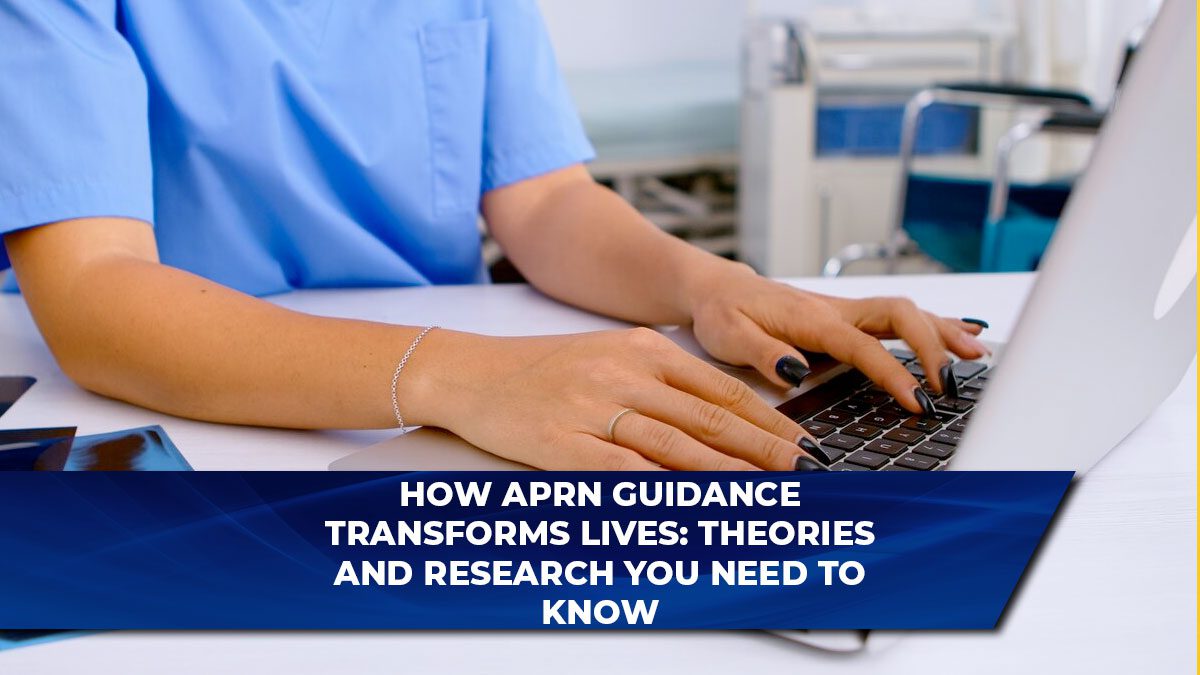Mastering APRN Guidance: Building Relationships That Transform Patient Outcomes
Building Relationships for APRN Guidance and Coaching
The Importance of Empathy and Compassion in Building Relationships
Carl Rogers expanded upon Maslow’s hierarchy of needs by introducing the concept that for an individual to grow, they require acceptance, genuineness, and empathy. Rogers emphasized that each person has the potential to achieve their deepest desires and self-actualization, but this growth is nurtured through empathy. In APRN guidance and coaching, this concept is paramount. The ability to build strong, trusting relationships with patients begins with a foundation of empathy.
Rogers described empathy as an underappreciated way of being, stating that accurate empathy involves being fully present with the patient, highly sensitive to their experience and world. This form of empathy is not merely passive listening; it is active, engaged, and transformative. Patients who experience accurate empathy become more emotionally mature, more open, and less defensive, which in turn enhances the effectiveness of APRN guidance and coaching.
Trzeciak et al. (2019) in their book Compassionomics highlighted that empathy precedes compassion. First, one must truly understand another person, and then compassion—the action that results from empathy—follows. For APRNs, empathy and compassion are essential tools in building relationships that foster change and improvement in patient outcomes.
Understanding the Neurophysiology of Empathy in APRN Practice
Empathy is not only an emotional state but also has a basis in neurophysiology. Research in the mid-1990s identified neural networks of mirror neurons, which are activated both by the actions of an individual and by observing similar actions performed by others. This discovery offers insights into how empathy is formed and supported in the brain. For APRNs, understanding this neurophysiological basis of empathy can enhance their ability to connect with patients on a deeper level, thereby improving the effectiveness of their guidance and coaching.
When an APRN listens to and observes a patient, mirror neurons are activated as if the APRN is experiencing what the patient is experiencing. This neural activation helps APRNs to build stronger, more empathetic relationships with their patients. By practicing empathy and compassion, APRNs can create a supportive environment that encourages patient engagement and cooperation.
Practical Steps for Building Relationships in APRN Guidance
To build effective relationships in APRN guidance and coaching, practitioners can take several practical steps that align with the principles of empathy and compassion:
Audio-Record Patient Visits: By audio-recording a visit, APRNs can reflect on the content and tone of the interaction. This practice allows for a deeper understanding of the patient’s experience and provides opportunities for self-improvement in communication and empathy.
Reflect on Patient Emotions: During interactions, APRNs should practice reflecting back to the patient their understanding of the emotions the patient may be experiencing. This not only validates the patient’s feelings but also strengthens the relationship by showing that the APRN is truly listening and caring.
Acknowledge Emotional Content: It is essential for APRNs to acknowledge the emotional content of what the patient is saying. Recognizing and addressing emotions helps to build trust and rapport, which are critical components of a successful coaching relationship.
Ask How to Help: Asking the patient how the APRN can help them directly involves the patient in their care plan. This collaborative approach fosters a sense of partnership and mutual respect, which are key to building strong, effective relationships.
Building Trust as the Foundation of APRN Guidance
Trust is the cornerstone of any successful relationship, and this is especially true in APRN guidance and coaching. Patients are more likely to follow advice and make positive changes when they trust their healthcare provider. Building trust requires time, consistency, and transparency.
APRN practitioners can build trust by consistently showing empathy, being genuine in their interactions, and providing clear, honest communication. When patients feel understood and valued, they are more likely to engage in the guidance and coaching process.
The Role of Active Listening in Building Relationships
Active listening is a critical skill in building relationships for APRN guidance and coaching. It involves fully concentrating, understanding, responding, and remembering what the patient says. Active listening goes beyond hearing words; it involves understanding the patient’s emotions, concerns, and motivations.
By practicing active listening, APRNs can identify the underlying issues that may be affecting a patient’s health and well-being. This understanding allows APRNs to provide more personalized and effective guidance, leading to better patient outcomes.
Enhancing Communication for Better Relationships
Effective communication is essential in building strong relationships in APRN guidance. This involves not only speaking clearly and concisely but also being aware of non-verbal cues, such as body language, facial expressions, and tone of voice.
APRN practitioners should strive to create an open and supportive communication environment where patients feel comfortable sharing their concerns and asking questions. This openness fosters a deeper connection and encourages patients to take an active role in their healthcare journey.
The Impact of Empathy on Patient Outcomes
The relationship between empathy and patient outcomes is well-documented. Patients who feel understood and cared for are more likely to adhere to treatment plans, attend follow-up appointments, and make positive lifestyle changes. Empathy not only improves patient satisfaction but also leads to better clinical outcomes.
For APRNs, demonstrating empathy in every interaction is not just a professional obligation but a critical factor in achieving successful patient outcomes. By building empathetic relationships, APRNs can positively influence the health and well-being of their patients.
Overcoming Barriers to Building Relationships in APRN Practice
Despite the importance of building relationships, APRNs may face barriers such as time constraints, high patient volumes, and administrative demands. However, by prioritizing relationship-building and incorporating empathy into every patient interaction, APRNs can overcome these challenges.
Strategies such as delegating non-clinical tasks, using technology to streamline administrative work, and setting aside dedicated time for patient interactions can help APRNs focus on building strong, trusting relationships.
FAQs on Building Relationships for APRN Guidance and Coaching
Q: Why is building relationships important in APRN guidance and coaching?
A: Building relationships is crucial because it fosters trust, improves communication, and enhances patient outcomes. Strong relationships create a supportive environment where patients feel valued and are more likely to follow guidance.
Q: How can APRNs build trust with their patients?
A: APRNs can build trust by showing empathy, being genuine, providing clear communication, and consistently following through on commitments. Trust is built over time through positive, supportive interactions.
Q: What role does empathy play in APRN guidance?
A: Empathy allows APRNs to understand their patients’ experiences and emotions, leading to more personalized and effective guidance. Empathy also strengthens the patient-provider relationship, which is essential for successful coaching.
Q: What are some practical steps APRNs can take to build relationships?
A: Practical steps include active listening, reflecting on patient emotions, acknowledging emotional content, and asking patients how they can be helped. These actions show patients that their feelings and needs are valued.
Q: How does active listening benefit APRN guidance and coaching?
A: Active listening helps APRNs identify underlying issues, understand patient motivations, and provide more tailored guidance. It also builds trust and rapport, which are essential for effective coaching.










